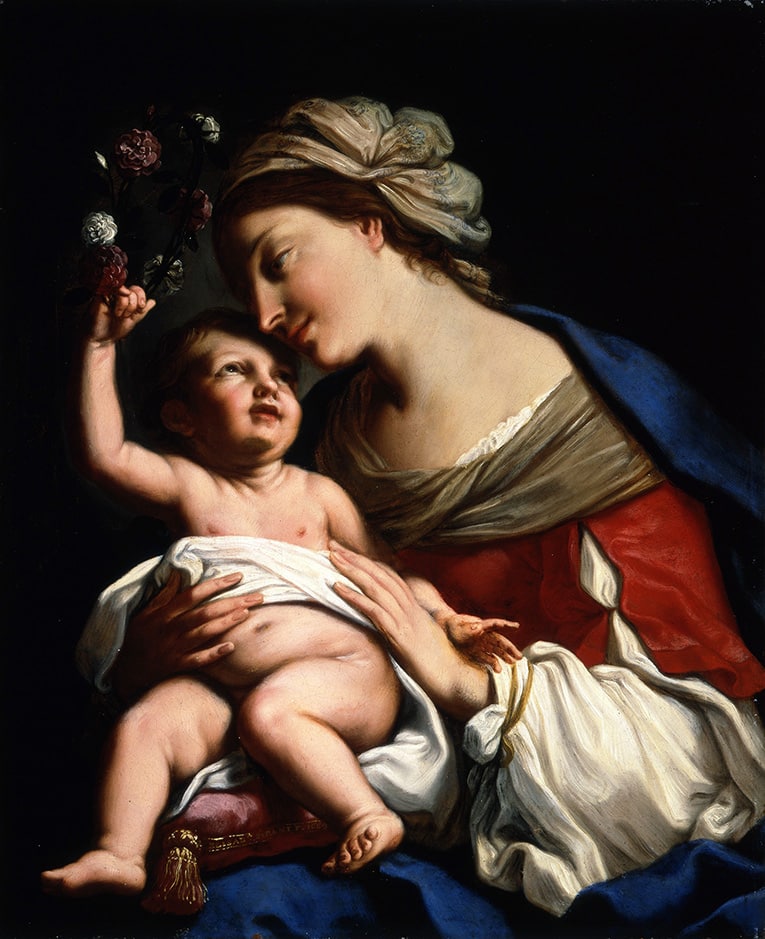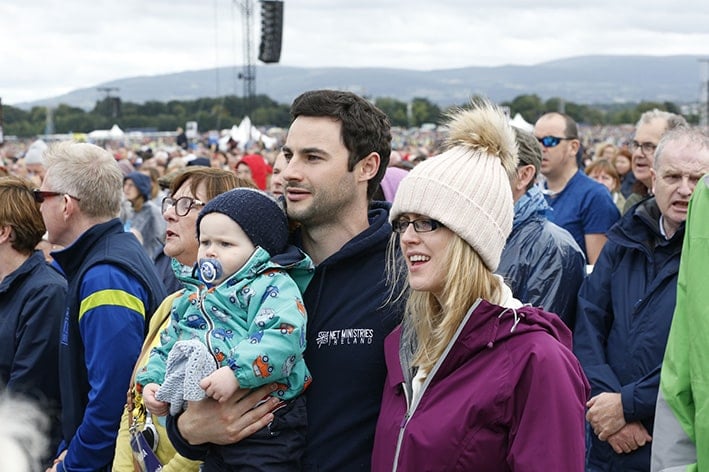
The decision of the Australian bishops to re-consecrate the nation to the Immaculate Heart of Mary Help of Christians, and in honour of her feast day, brings to the fore the integral relationship between Mary and the Church.
Prior to his formal prayer of reconsecration at St Mary’s Cathedral earlier this week, Archbishop Fisher observed, “Often in history the Christian people have asked for Our Lady’s intercession on their behalf, especially in time of danger”. These times of pandemic and challenge for the Church are no exception.
Mary as a model for the Church …
When we delve into tradition we find a vast inventory of patristic and medieval sources that highlight Mary’s role in the history of salvation as intimately bound up with the mystery of the Church, and vice versa. The Marian shape of the Church’s faith and the ‘ecclesiality’ of Mary throw clear light on the nature of Christian discipleship itself – in its active and sanctifying dimension, as well as its receptive nature as a response to God.
When we delve into tradition we find a vast inventory of patristic and medieval sources that highlight Mary’s role in the history of salvation
It is noteworthy that throughout our Catholic tradition we find a deep appreciation of Mary as a model of discipleship but not only this. Our Lady is also embraced as an active and dynamic presence in the faith lives of ordinary believers, a presence imbued with invitations to holiness and fruitfulness.
… and for us
The 12th Century monk, theologian and philosopher Isaac of Stella affirmed, “What is said universally of the Church, virgin and mother, is also said individually of Mary; and what is said in a special way of Mary, virgin and mother, is understood by right, but in a general way of the Church, virgin and mother”.
Isaac extends this insight into the realm of the personal when he notes, “[Also] each faithful soul is understood in its own sense to be virgin and fruitful. The same thing is therefore said universally for the Church, in a special way for Mary, individually for the faithful soul”.

A sign for our response to God
Here we find a deep correspondence and harmony between the Church’s mystery, the person of Mary, and the individual Christian. Each dimension of humanity’s response to the Word – the universal and particular, the ecclesial and personal – is enriched and develops in relationship to the other within the beauty and unity of God’s plan.
In contemplating Our Lady the Church also becomes aware of God’s desire to associate his creatures with the work of their own salvation. Mary’s personal participation in God’s redemptive plan embodies the collective vocation of humanity to collaborate in the fulfilment of God’s design.
The Church as a mother
The inspiration of Mary for the Church extends also to her active, sanctifying maternity which we find in the Church Fathers as a theme par excellence. What was once granted in the flesh to Mary is now granted spiritually to the Church for the Church ‘conceives’ the Word of God in her flesh. In its document on the nature of the Church, the Second Vatican Council echoed this ancient intuition when it declared “The Church . . . by receiving the word of God in faith becomes herself a mother” (Lumen Gentium 64).
As type or figure of the Church, the motherhood of Mary anticipates and models the Church’s own bringing forth of Christ by the Holy Spirit. Indeed, we recognise that Christ was born in Mary to be ultimately born in us.
Bearing fruit

Significantly, the French theologian and cardinal Henri De Lubac was keen to add that the maternity of Mary is not to be understood in only corporal terms but also, and essentially, as a response of faith: “And she conceived, believing, him who she bore believing”. This emphasis is also found in Lumen Gentium (n.53-56) where Mary is described as having, above all else, “received the Word of God in her heart”, faithfully cooperating in the work of human salvation. The implication for our own discipleship as a communion is clear: like Mary, the Church is fruitful to the extent of her faith.
Bringing new life into the world
The virginal nature of Mary’s motherhood also contains particular significance for us as Christians because, like Mary, the Church bears fruit not as a result of its own resources but only on account of the grace of God alone who gives life through his Bride by the Spirit. Both the motherhood of Mary and the Church depend upon the animation of the Spirit by virtue of handing on a sacred life, and so the Church brings into the world the Christ whom Mary bore centuries ago.
Augustine on Mary
In his own reflections on Our Lady, St Augustine would stress the unifying nature of Mary and the Church. He noted that the motherhood of both produce a multitude of the faithful unified in the one body of Christ. He writes, “Though the Church bears multitudes, she makes of all her children the members of one body and that similarly, just as our Lady became the mother of many through the birth of One, so also the Church, by bringing to birth many, becomes the ‘mother of unity’”.

Full of grace
This maternal function of the Church culminates in the celebration of the Eucharist which is prefigured in the issuing of Christ from the womb of the Virgin. Just as Mary bore the earthly Christ, so the Church bears the Eucharistic Christ for the salvation of our world.
“Full of grace” it is Mary who models for us the sanctified Christian and the sanctified Church, created and called to holiness and fruitfulness in Christ. Mary emerges as the mother of that body of which she is also spiritually a daughter.
It is in the context of this integral bond between Our Lady and the Church that we reconsecrate or entrust ourselves to Mary’s prayer and maternal protection as the help of Christians, as spiritual mother of the Church and faithful disciple of her own Son.
Related
